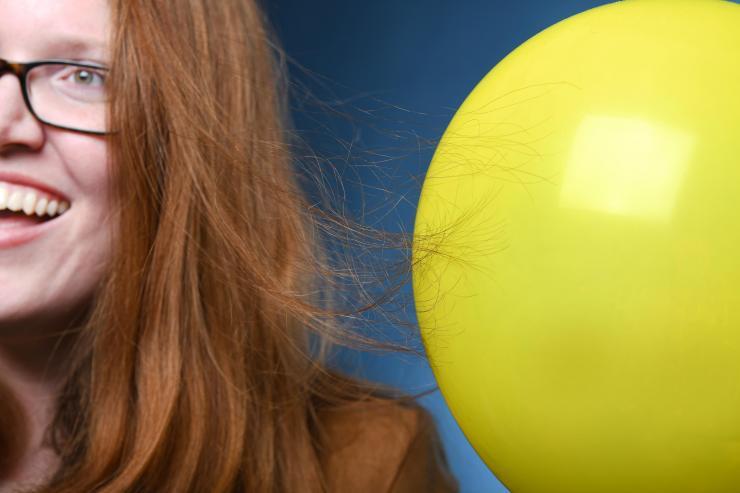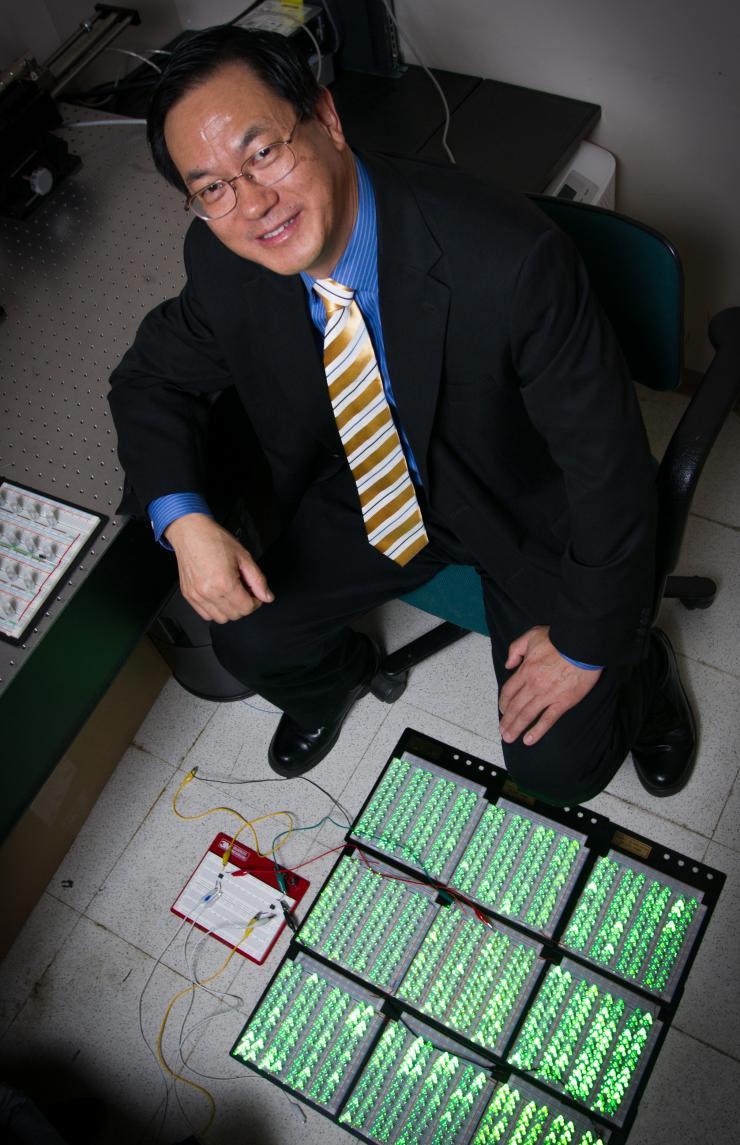New Insights Could Pave The Way For Self-Powered Low Energy Devices
Feb 23, 2018 — Atlanta, GA

Exploring the effects of static electricty. (Christopher Moore, Georgia Tech)
Most people have felt that sting from grabbing a doorknob after walking across a carpet or seen how a balloon will stick to a fuzzy surface after a few moments of vigorous rubbing.
While the effects of static electricity have been fascinating casual observers and scientists for millennia, certain aspects of how the electricity is generated and stored on surfaces have remained a mystery.
Now, researchers have discovered more details about the way certain materials hold a charge even after two surfaces separate, information that could help improve devices that leverage such energy as a power source.
“We’ve known that energy generated in contact electrification is readily retained by the material as electrostatic charges for hours at room temperature,” said Zhong Lin Wang, Regents' Professor in the School of Materials Science and Engineering at the Georgia Institute of Technology. “Our research showed that there’s a potential barrier at the surface that prevents the charges generated from flowing back to the solid where they were from or escaping from the surface after the contacting.”
In their research, which was reported in March in the Advanced Materials, the researchers found that electron transfer is the dominant process for contact electrification between two inorganic solids and explains some of the characteristics already observed about static electricity.
“There has been some debate around contact electrification – namely, whether the charge transfer occurs through electrons or ions and why the charges retain on the surface without a quick dissipation,” Wang said.
It’s been eight years since Wang’s team first published research on triboelectric nanogenerators, which employ materials that create an electric charge when in motion and could be designed to harvest energy from a variety of sources such as wind, ocean currents or sound vibrations.
“Previously we just used trial and error to maximize this effect,” Wang said. “But with this new information, we can design materials that have better performance for power conversion.”
The researchers developed a method using a nanoscale triboelectric nanogenerator – composed of layers either of titanium and aluminum oxide or titanium and silicone dioxide – to help quantify the amount of charge accumulating on surfaces during moments of friction.
The method was capable of tracking the accumulated charges in real time and worked over a wide range of temperatures, including very high ones. The data from the study indicated that the characteristics of the triboelectric effect, namely, how electrons flowed across barriers, were consistent with the electron thermionic emission theory.
By designing triboelectric nanogenerators that could withstanding testing at high temperatures, the researchers also found that temperature played a major role in the triboelectric effect.
“We never realized it was a temperature dependent phenomenon,” Wang said. “But we found that when the temperature reaches about 300 Celsius, the triboelectric transfer almost disappears.”
The researchers tested the ability for surfaces to maintain a charge at temperatures ranging from about 80 degrees Celsius to 300 degrees Celsius. Based on their data, the researchers proposed a mechanism for explaining the physics process in triboelectrification effect.
“As the temperature rises, the energy fluctuations of electrons become larger and larger,” the researchers wrote. “Thus, it is easier for electrons to hop out of the potential well, and they either go back to the material where they came from or emit into air.”
This work was supported by the Hightower Chair Foundation, the National Key R & D Project from the Minister of Science and Technology of China, the National Natural Science Foundation of China and the Six Talent Peaks Project in Jiangsu Province, China. Any conclusions or recommendations are those of the authors and do not necessarily represent the official views of the sponsoring organizations.
CITATION: Cheng Xu, Yunlong Zi, Aurelia Chi Wang, Haiyang Zou, Yejing Dai, Xu He, Peihong Wang, Yi-Cheng Wang, Peizhong Feng, Dawei Li, and Zhong Lin Wang, “On the Electron-Transfer Mechanism in the Contact-Electrification Effect,” (Advanced Materials, March, 2018). http://dx.doi.org/10.1002/adma.201706790

Georgia Tech professor Zhong Lin Wang poses with an array of 1,000 LED lights that can be illuminated by power produced by the force of a shoe striking a triboelectric generator placed on the floor. (Credit: Rob Felt, Georgia Tech).
Research News




